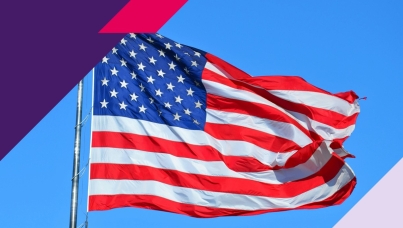Can Product Uniqueness Boost Consumer Purchase Interest?
Every day hot new products enter the marketplace and existing products are improved to keep pace. Yet a surprising number of novel ideas fail to take hold, and many enhanced products lose customer loyalty and market share. Research, anecdotal evidence and experience have shown that liking, price value perception and need fulfillment are the primary drivers for consumer purchase interest, but how does product uniqueness relate to product success? A product concept with high liking may or may not compel consumers to buy. Likewise, high uniqueness for a product concept may or may not have a positive impact on purchase interest. However, while liking, price value perception and need fulfillment are the primary drivers of consumer purchase interest, researchers have discovered an interesting relationship between liking and uniqueness.
By mining a comprehensive database of key measures--including purchase interest, liking, price value, uniqueness, need fulfillment, and believability--and using analytical software, the relationships between key measures, such as uniqueness and liking, are easily discernable. The Ipsos-Vantis Global Key Measures Database is used to efficiently integrate and compare study information with historical results to identify potential opportunities for profitability and to enhance forecasting accuracy. Our research shows that while high liking and high uniqueness in combination cannot guarantee the product will flourish in the marketplace, they can tremendously enhance purchase interest.
Uniqueness & liking
As the chart above demonstrates, purchase interest is essentially flat regardless of uniqueness when consumers show an average or lower liking of the product. When the liking of a product is ranked as below average, indexed purchase interest remains below 50% even if the product is top-rated in terms of its uniqueness. However, when the liking of a product is above average, indexed purchase interest rises to 61.7% for a product below average in uniqueness, 68.7% for a product average in uniqueness, 75.6% for a product above average in uniqueness, and 82.6% for the top-rated product in terms of uniqueness. Of course, with a product top-rated in terms of liking, the purchase interest rises even higher as the product uniqueness increases. In summary, purchase interest in essentially flat regardless of uniqueness when liking is average or lower. However, when liking is above average or better, purchase interest scores rise as uniqueness scores increase from bottom 20% to top 20% in the database.
Thus there is a highly dependent relationship between product uniqueness and product liking in determining consumer purchase interest. This relationship was discovered by building a general linear model to predict purchase interest using liking, uniqueness and interactions terms as the predictor variables, while balancing the effects of price value, need fulfillment and believability on purchase interest.
The value of uniqueness
What about situations where a product concept is highly unique and highly liked, but purchase interest is low? In this case, purchase interest may be negatively impacted by high price (low price value), as demonstrated in the chart below. As price value decreases from the top 20% to the bottom 20% in the database, purchase interest also decreases, even while uniqueness and liking remain above average or higher.
A product concept considered above average or higher in uniqueness and liking with an average price value has strong purchase interest for some products, irrespective of its ranking in terms of need fulfillment. For example, consumer electronics and technology ideas with a combination of strong liking and uniqueness can have strong purchase interest--if the price is right--regardless of need fulfillment, as shown in the chart below.
What about situations where a product concept is not unique at all, but purchase interest is high? In this case, liking, price value, need fulfillment, or a combination of these factors, are driving purchase interest. Another reason purchase interest might be low for a highly unique product--even with average or higher price value, liking, and need fulfillment--is product believability. High uniqueness coupled with low believability may negatively impact purchase interest, such as in the case of some in-home medical tests products. Researchers found purchase interest decreased as believability decreased from the top 20% to the bottom 20% in the database, even while uniqueness remained at least above average. (see chart below)
As our research shows, product concepts do not have to be entirely unique to drive customer purchase interest, nor does a product concept with high uniqueness and high liking guarantee the product will prosper. However, a product with the right combination of key factors can lead to more effective and meaningful communication with better retail support. Understanding the relationships between key factors that motivate consumer purchase interest can ensure your hot new product or improved concept has the right elements to propel sales.



